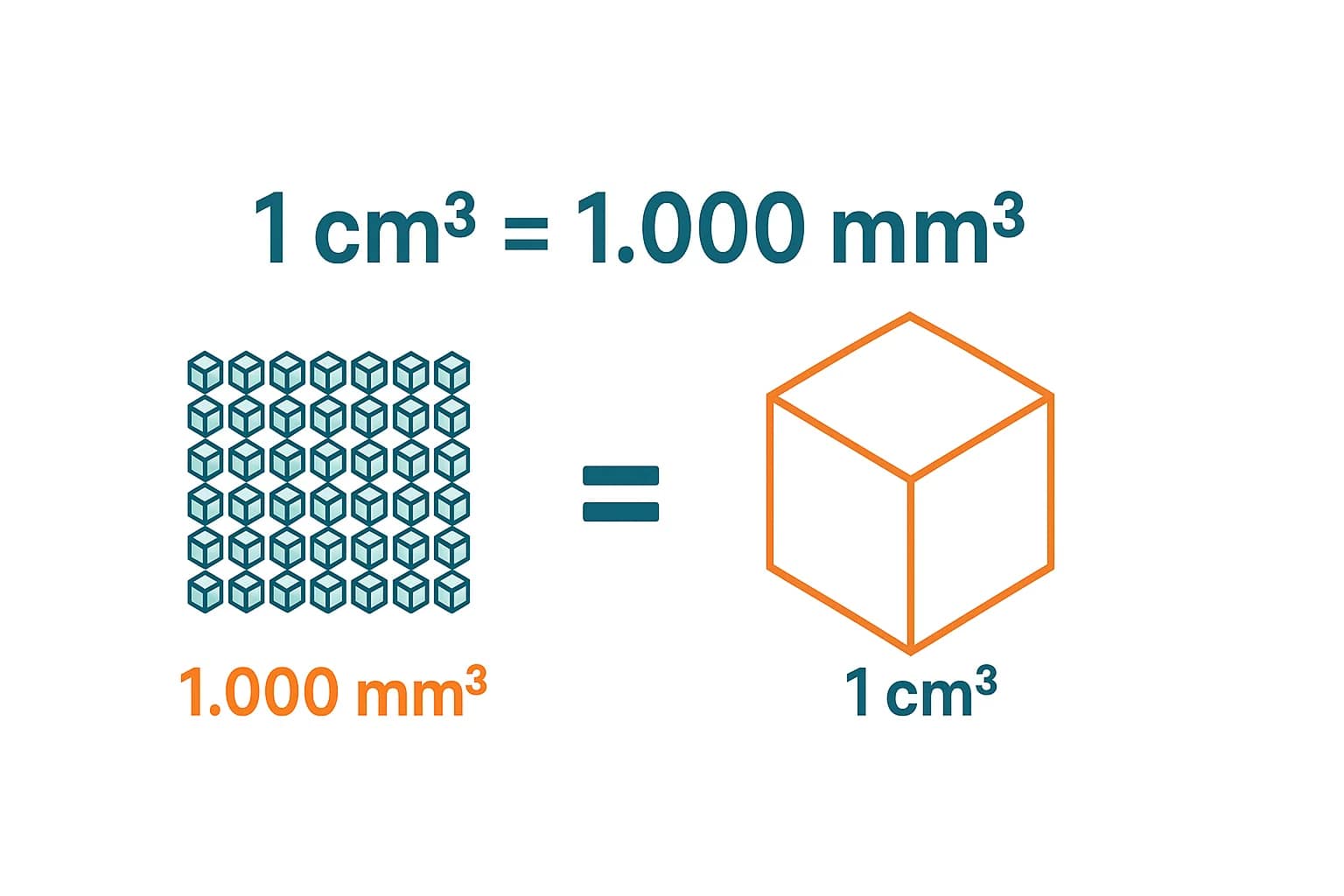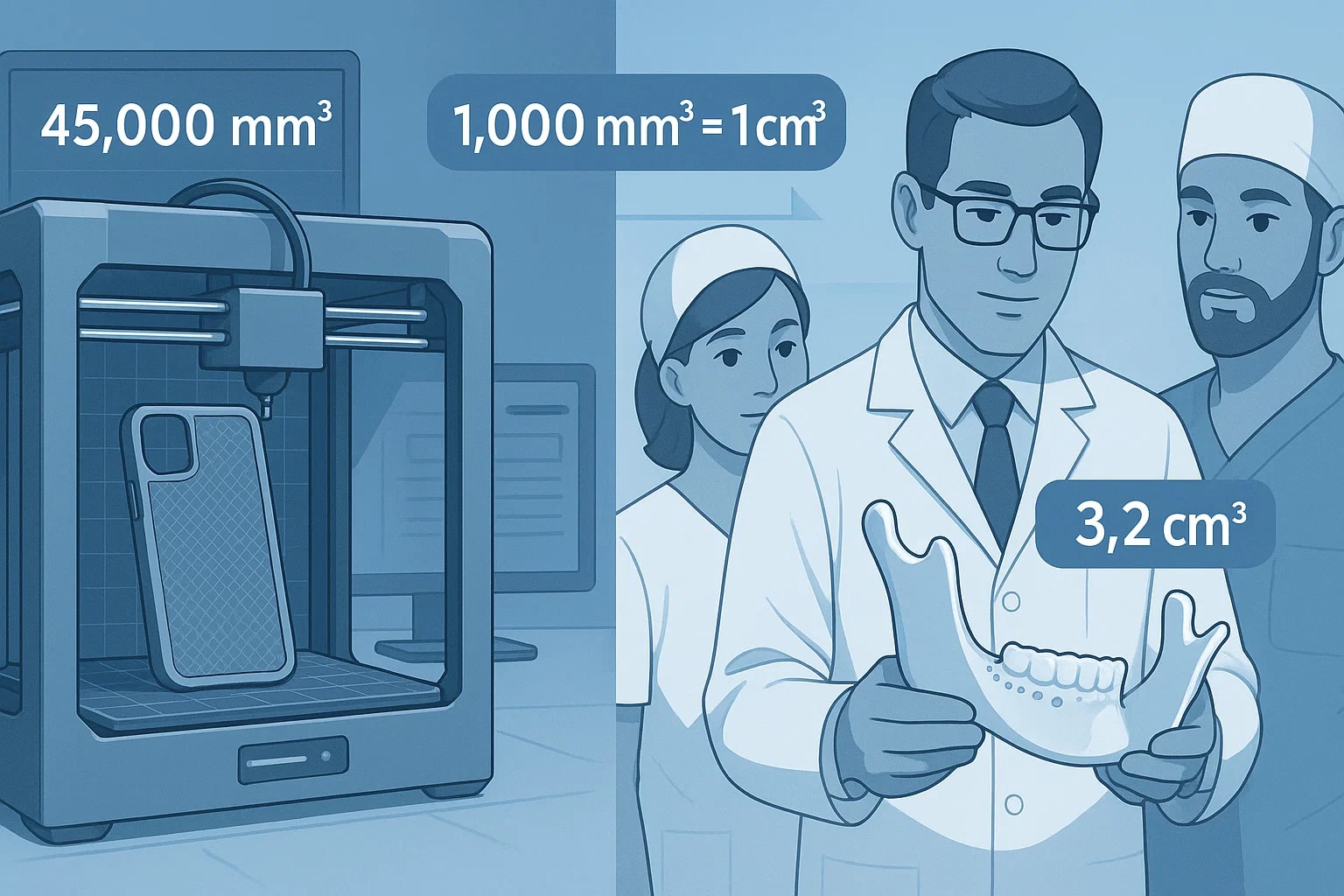cubic millimeter to cubic centimeter – How to convert mm³ to cm³
Working with small volumes often requires switching between cubic millimeter to cubic centimeter. These tiny units are widely used in engineering, 3D printing, jewelry design, and medicine. While the scale difference is small, accuracy matters. Jetcalculator helps you convert instantly, but let’s look at the meaning of these units, their formulas, and why they’re so important in real-world applications.
What is a Cubic Millimeter (mm³)?
A cubic millimeter (mm³) is the volume of a cube with each side measuring 1 millimeter. It’s an extremely small unit, often used in fields like material science, electronics, and biology. For perspective, a single grain of sand can have a volume close to 1 mm³.
What is a Cubic Centimeter (cm³)?
A cubic centimeter (cm³) is the volume of a cube with each side measuring 1 centimeter. This unit is commonly used in medical dosages, car engine displacement, and packaging. In fact, 1 cm³ is equal to 1 milliliter (mL), making it one of the most practical volume units for everyday use.
Formula to Convert mm³ to cm³
The conversion formula is simple, since 1 cm = 10 mm:
-
1 cm³ = 1,000 mm³ -
1 mm³ = 0.001 cm³
So the formulas are:
-
V (cm³) = V (mm³) ÷ 1,000 -
V (mm³) = V (cm³) × 1,000
Example: 2,500 mm³ = 2.5 cm³.

With Jetcalculator’s cubic millimeter to cubic centimeter converter, you can avoid manual calculations and get precise results instantly.
Do you know?
-
Cubic millimeter fact: In biomedical research, the human brain’s hippocampus shrinks by about 3,000 mm³ per decade in older adults. This tiny change, measured in cubic millimeters, helps scientists study memory loss and diseases like Alzheimer’s.
-
Cubic centimeter fact: The size of car engines is often expressed in cm³. For example, a 1,600 cm³ engine is commonly described as a “1.6 liter” engine. This shows how cm³ connect directly to liters and everyday life.
3D Printing and Small Volumes
In the world of 3D printing, the units mm³ and cm³ are everywhere. Designers often build digital models in millimeters for accuracy, but when it comes to measuring material use or cost, the values are reported in cubic centimeters.
Imagine printing a prototype for a phone case. The software might calculate its volume as 45,000 mm³, but the filament provider sells material priced per cm³. To understand cost and production time, the designer must quickly convert from mm³ to cm³.
Even more fascinating, this relationship plays a role in medical implants. A jawbone implant, for instance, may be modeled at 3,200 mm³, while surgeons prefer to discuss its size in cm³ for consistency with other medical units. The ability to convert precisely ensures designers, doctors, and manufacturers all speak the same language.
This example shows how a simple conversion keeps entire industries aligned—from the creative world of designers to the precise world of healthcare. Without clear conversions between mm³ and cm³, communication and production could easily break down.

Precision at the Smallest Scale
From the microscopic scale of biology to the mechanical world of engines and 3D printing, the conversion 1 cm³ = 1,000 mm³ connects two essential volume units. A cubic millimeter might seem too small to matter, but when multiplied by thousands or millions, it becomes central in design, research, and production.
Jetcalculator’s cubic millimeter to cubic centimeter converter ensures quick, accurate results for professionals and students alike. For more complex needs, try our Volume Converter or explore the full set of Conversion Tools to make sure every calculation, large or small, is effortless.

